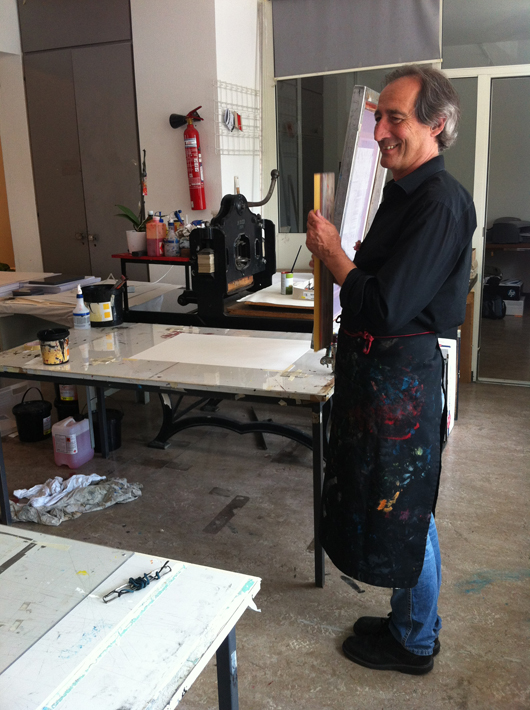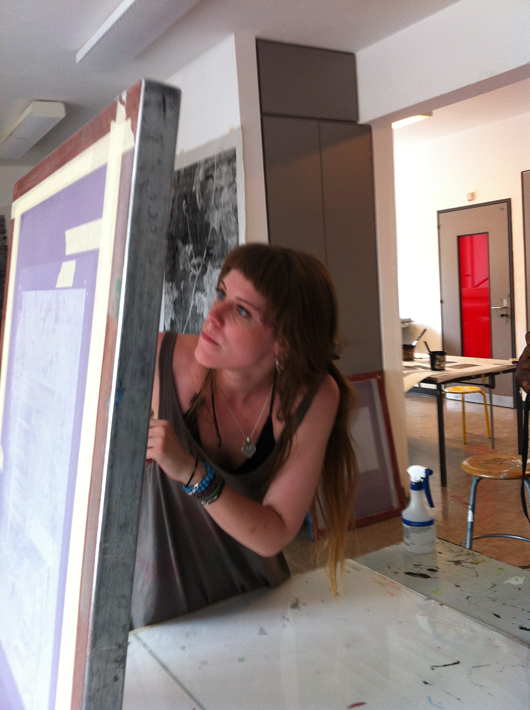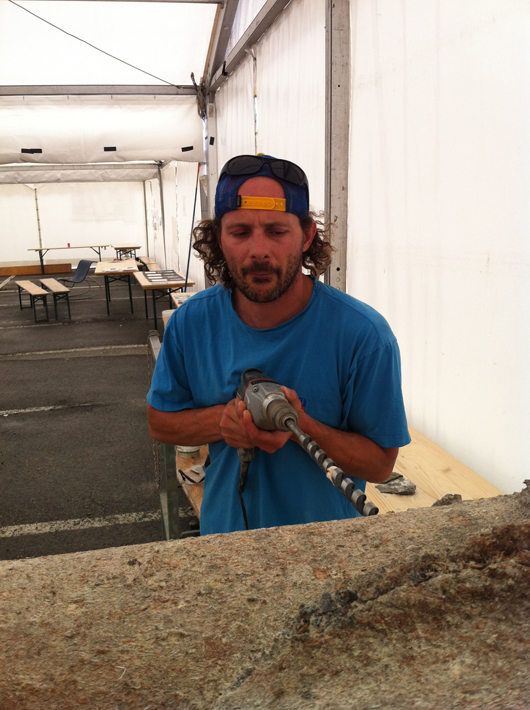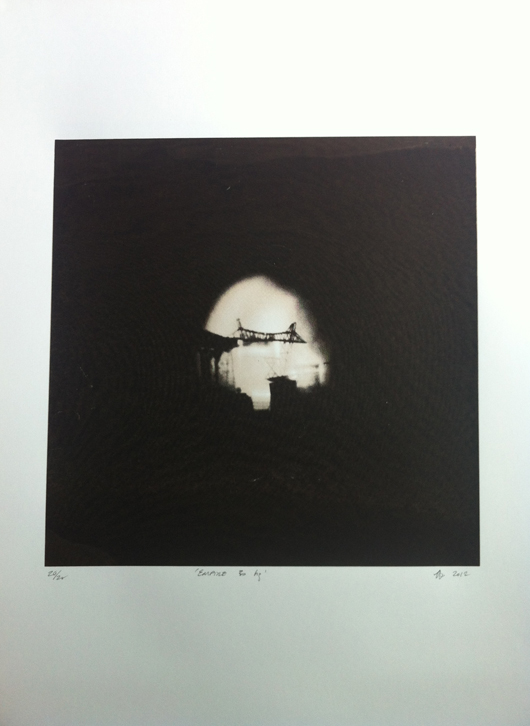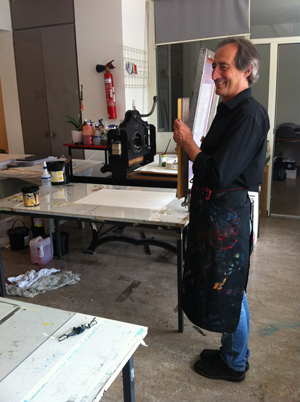
VERBIER, Switzerland – The morning is slightly chill as we load our packed lunches in the back of Kiki’s car. ECAV, where we are headed, is an hour’s drive away and is where our print workshop is situated.
We are welcomed by Francois Locher and his assistant. Francois is friendly and energetic, and this bodes well for the progress over the next two days. We travel up the stairs to the print rooms. Their smell is unmistakeable — a mixture of inks and chemicals. The whole place has the air of an alchemist’s workshop about it, a place of mysterious equipment and a mountain of multi-colored ink tins piled in the corner.
The process of assessing our images begins. The sparkling computers and inkjet printers look incongruous next to the cast-iron presses and rollers from the main workshop. In art there is no room for the Luddite; you simply must move with the times. Francois explains that we are allowed to do a screenprint of two colors. This involves scanning an image or processing an existing file, separating it into its primary colors and balancing the detail available in order to produce a photo-sensitive image. This is then attached to a silkscreen to produce an image on paper. Sound complicated? Well, it is, and there is no way around it. Best trust the alchemist and follow what he says to the letter! We jostle for position as Francois asks for our images. Only one can be processed at a time. I make it to the front. PhotoShop flares up on the screen and my file is assessed. An inkjet printer fires up and two large tracing paper images are produced. These are my templates. A small group of students have gathered around us and we realize that they are to be our helpers throughout the process. A young girl takes my tracing paper templates and gestures me to follow her.
To cut a long story short, without the aid of our student helpers, it is questionable as to how far we could have gotten with our prints. They all spoke perfect English and were fantastically helpful and competent as they guided us through a whirlwind of activity. This climaxed at the end of the first day with the first color of our image being printed.
The last time I made a print was when I was a student many years ago. As I looked at my day’s work, I remembered what a rewarding activity it is.
Our second day with Francois was perhaps more frantic. Some of the screens needed extra attention, and there were a few adjustments as we changed our minds about what we wanted. Remarkably, by 4 o’clock in the afternoon we had all editioned our prints. A stack of 20, signed and dated, was the result. I was overjoyed with the outcome; my print was wonderful. Francois was as cool and unflappable as ever and thanked us for working together. A very talented and capable man.
We travel back to Verbier all basking in a warm glow of satisfaction, the rigors of making sculpture largely forgotten in the excitement of working in a different medium.
We now have to prepare for a public debate scheduled for tomorrow, a panel discussion titled, ‘Can Art Save the Environment?’
The venue is in a hall on the edge of Verbier. I am on the panel with Paul Goodwin, our curator, who is newly arrived from London. Our chair is the charming and erudite Johanna Bernstein, a lawyer on an environmental crusade.
Paul has prepared a wonderful presentation about the history of land art and the environmental impact of the artist. The talk goes well and the audience is appreciative and happy to ask questions afterwards. The consensus is fairly clear: artists cannot save the environment on their own but they can raise awareness of the issues involved. As I help tidy after the talk, I consider the fact that my work looks rather ‘non green’ with its aluminium and copper structure and its obvious association with a love of technology. I cram a plastic bottle into the recycling bin and wonder whether taking an intellectually ‘green’ approach is enough.
Food for thought perhaps.
# # #
ADDITIONAL IMAGES OF NOTE
